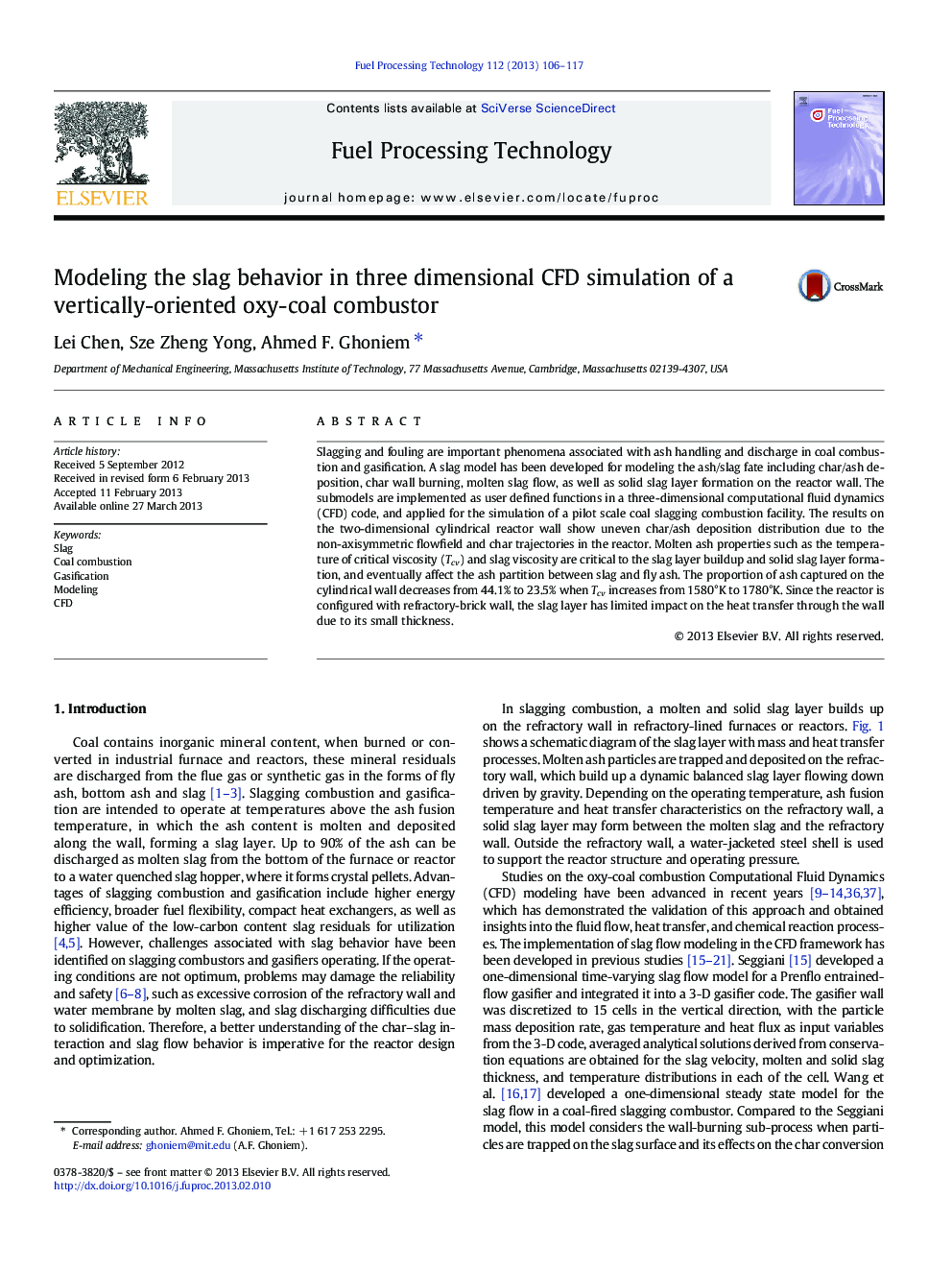| کد مقاله | کد نشریه | سال انتشار | مقاله انگلیسی | نسخه تمام متن |
|---|---|---|---|---|
| 209969 | 461694 | 2013 | 12 صفحه PDF | دانلود رایگان |

Slagging and fouling are important phenomena associated with ash handling and discharge in coal combustion and gasification. A slag model has been developed for modeling the ash/slag fate including char/ash deposition, char wall burning, molten slag flow, as well as solid slag layer formation on the reactor wall. The submodels are implemented as user defined functions in a three-dimensional computational fluid dynamics (CFD) code, and applied for the simulation of a pilot scale coal slagging combustion facility. The results on the two-dimensional cylindrical reactor wall show uneven char/ash deposition distribution due to the non-axisymmetric flowfield and char trajectories in the reactor. Molten ash properties such as the temperature of critical viscosity (Tcv) and slag viscosity are critical to the slag layer buildup and solid slag layer formation, and eventually affect the ash partition between slag and fly ash. The proportion of ash captured on the cylindrical wall decreases from 44.1% to 23.5% when Tcv increases from 1580°K to 1780°K. Since the reactor is configured with refractory-brick wall, the slag layer has limited impact on the heat transfer through the wall due to its small thickness.
Figure optionsDownload as PowerPoint slideHighlights
► A slag model has been developed for CFD simulation of coal combustion/gasification.
► Slag thickness, flow velocity, and heat transfer through slag layers are predicted.
► Tcv and slag viscosity are critical to slag buildup and solid slag layer formation.
► Captured ash decreases from 44.1% to 23.5% as Tcv increases from 1580K to 178 K.
► The slag layer has limited impact on the heat transfer due to its small thickness.
Journal: Fuel Processing Technology - Volume 112, August 2013, Pages 106–117